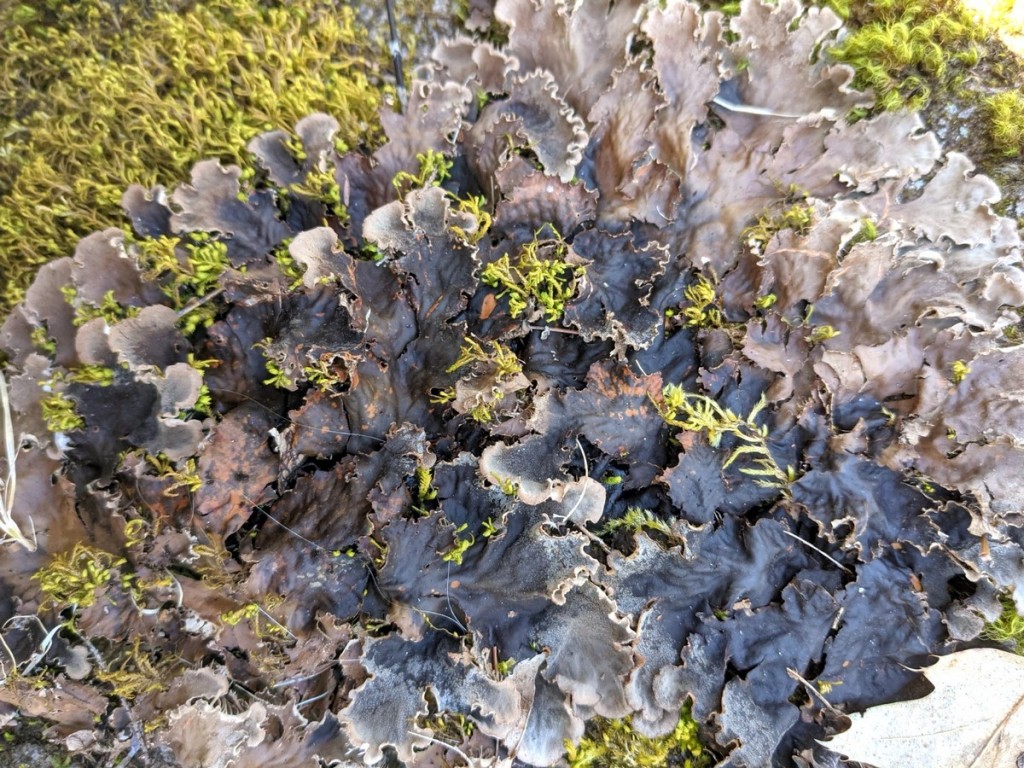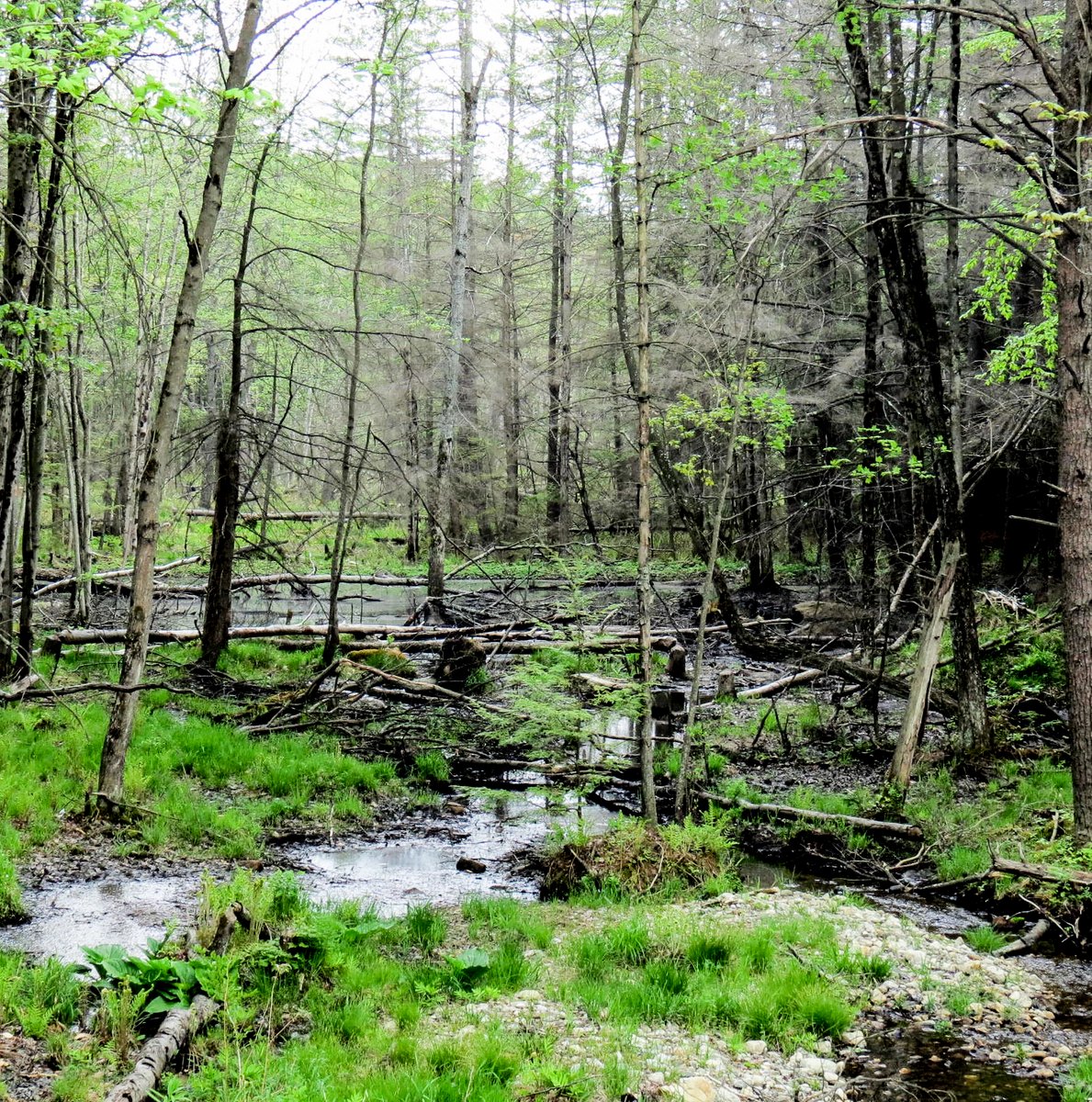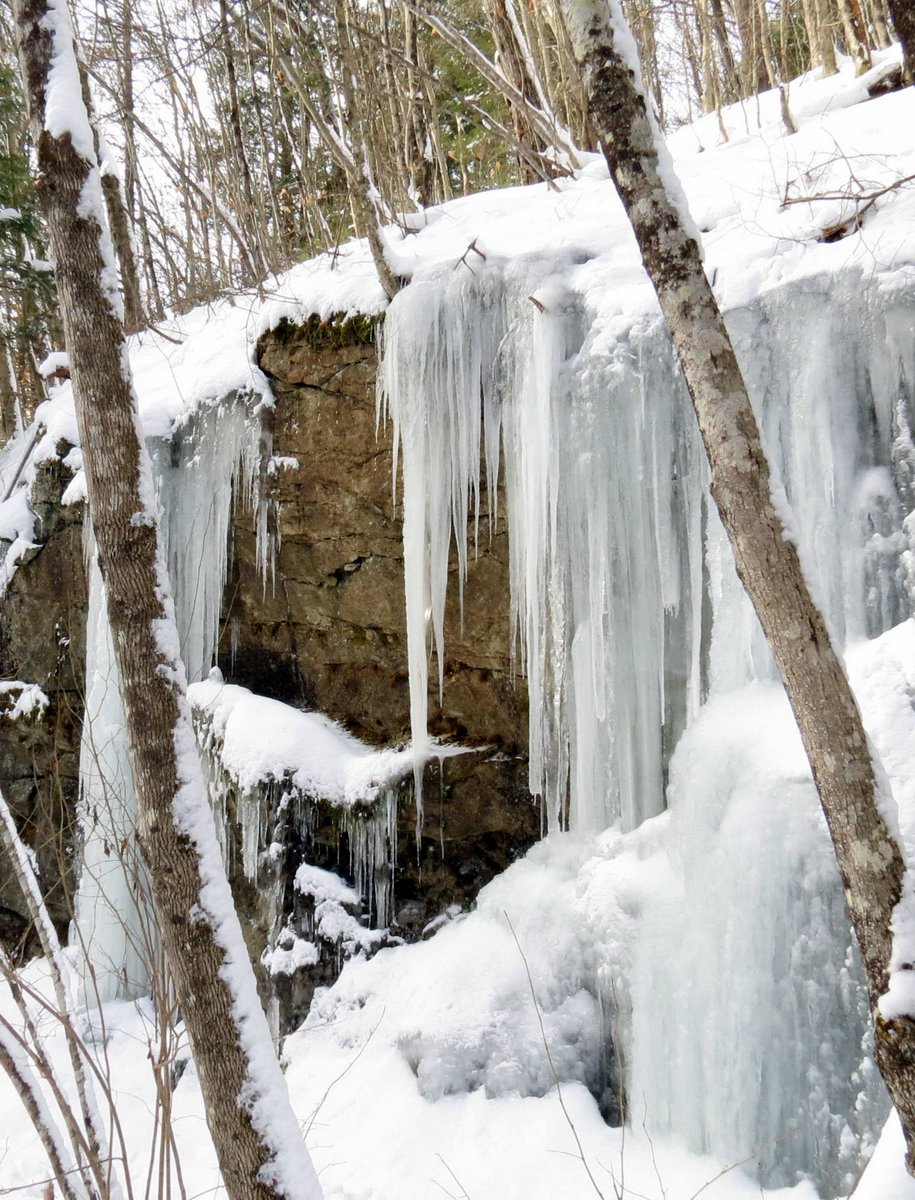
Before I get started on this walk through the Beaver Brook Natural area I’d like to thank all of you who wrote in with kind thoughts and well wishes after the last post. I won’t go on about it but I will say that it meant a lot, so thank you. I saw a doctor on Thursday and he said I should take some vitamins for brain health but otherwise my progress is as expected. Post concussion syndrome can apparently be a slippery thing, hard to get a handle on.
I should also like to apologize for adding information about my fall in such a shocking manner, but the point was to show how easily and quickly serious injuries can happen on trails, even to someone very familiar with the trail. All it takes is one misplaced step, so having a plan B is most important, as many of you pointed out.
Anyhow, after my fall I was having some pretty strong pain in my left leg, so after a couple of days of resting and nursing it I decided that walking might be better for it. I wanted a place where I could enjoy the beauty of the season while not having to worry about tripping and falling. That place could only be Beaver Brook Natural Area in Keene, and here we are just inside the gate in the photo above. The beauty was immediate and stunning, as I suspected it would be.

The old road we’re following remains pretty much as it was back in the 1970s when it was abandoned after all traffic was re-routed to the new route 9 north. The place remains frozen in time, with no passing zone lines, guard posts, a waterfall, and even a bridge over the brook still able to be seen. Now it is used as more of a park where local nature lovers can come to see the amazing beauty of the area. On this day the old road was nearly covered by fallen leaves and I felt like I was in grade school again as I shuffled through them and smelled their familiar warm, sunburnt, earthy scent.

I stepped off the road after making certain there were no stumps or branches to trip over so I could get a shot of these false Solomon’s seal berries, now fully ripe. It is said they taste like treacle, which is essentially molasses, and that eating more than a handful can lead to time for some bathroom meditation. I was surprised the turkeys hadn’t gobbled them up; there are quite a few turkeys here.
Something I didn’t talk about in the last post was watching my brand new camera slam into the gravel of the trail when I fell, and seeing my macro camera and one of the cell phones I carry in my shirt pockets go skittering across the stone filled trail. The second cell phone was in my left pants pocket and my left leg now has large purple bruises all over it after apparently taking the brunt of the fall, so when I finally got home that day I thought all four cameras were done for. But I tried them all here at Beaver Brook, and as you will see I was wrong; they all seem to have come through unscathed.
If you’re looking for tough field cameras able to stand up against anything a trail can throw at them I suggest the Canon PowerShot SX-70 and the Olympus TG-6. They’ve certainly proven themselves to me, again and again. You can have both for just over eleven hundred dollars and you won’t have to carry heavy lenses. They may not be the best choice for shooting fine art photos but they get the dirty, everyday jobs done without complaint.

All these thoughts come now as I sit and choose which photos to show and what to write but in truth on the day I was here there were no such thoughts. Many times a post will write itself in my mind right on the trail but on this day my mind just wanted to rest quietly so I simply enjoyed the beauty I saw, like my old friend the smokey eye boulder lichen that lives here. Sometimes, depending on the slant of the light, it looks as if someone has hammered a thin slice of gold onto the rocks and then burned a blue candle, letting its beautiful blue drops fall at random on the golden background. If someone ever asked me what I thought were the world’s most beautiful lichens this one would easily make the top ten.

In the last post my friend Cheri reminded me of the “Stuff your eyes with wonder” quote by Ray Bradbury. The entire quote says Stuff your eyes with wonder … live as if you’d drop dead in ten seconds. See the world. It’s more fantastic than any dream made or paid for in factories. That is just as true today as it was in 1953 when he said it, and if you’d like to practice what he preached this is a great place to do it. You don’t have to search for beauty because it is absolutely everywhere you care to look, and you can’t help but stuff your eyes full of the wonder of it all.

Hobblebush leaves have turned pink and orange this year and they were beautiful. This is the first time I’ve seen this. Hobblebush is one of our most beautiful native viburnums, especially in May when they’re loaded with hand size white flowers.

There are a lot of black birch trees here. They’re also called sweet birch or cherry birch and they were once almost wiped out by people wanting to harvest their essential oils, which smell like wintergreen. At one time toothpaste and just about anything else that smelled like wintergreen had black birch oils in it. They are the smaller trees with yellow leaves in the foreground, with taller beeches in the back. There was a lot of yellow here on this day.

The big hand size leaves of striped maple were still yellow, which was a surprise since they’ve usually gone over to white by this time. It’s such an odd year; as I write this we still haven’t seen a real frost. Usually by this time we’ve seen one or two freezes and the growing season would be finished, but this year it just goes on and on.

Beeches rule the hillsides here, and what beautiful and mighty rulers they are. Every now and then one will fall into the road but not this day. I didn’t see any beechnuts in the road either.

This place is beautiful at any time of year but in the fall nature just pulls out all the stops. Edward Abbey once said: There are some places so beautiful they can make a grown man break down and weep, and this is one of those. What he didn’t say, at least not that I have heard, is that you don’t weep from sadness or loss; you weep out of gratitude and love. In my experience when tears are wept in nature they come by way of revelation, and they are tears of joy.

Lemon drops brightened up the darkness of a rotting log. These flat, disc shaped fungi look like they lie flat on the log but they have a short stalk. Each one is smaller in diameter than a baby pea but when together in a group they can be seen from quite a distance. They are in the sac fungi family. The term “sac fungi” comes from microscopic sexual structures which resemble wine skins. There are over 64,000 different sac fungi, including cup and “ear” fungi, jelly babies, and morel mushrooms.

I saw the biggest caterpillar I’ve ever seen on a tree here. It was as big as my index finger and Wikipedia says after it winters under the bark of a tree it will become a giant leopard moth. The caterpillar is 3 inches long and its hairs don’t embed themselves in the skin as those of some other caterpillars will. It has red / orange rings on its body that make it easy to identify. It eats dandelion, plantain, and violet leaves.

I found this photo of a very pretty giant Leopard moth taken by Jeremy Johnson of Toronto on Wikipedia. According to what I’ve read these moths have a range covering most of the eastern U.S., the southern part of Ontario, and south to Columbia. They are said to be attracted to bitter, unripe vegetables and broccoli flowers. They have a body length of about 2 inches and a wingspan of 3 inches, so they are big. They are also strictly nocturnal and fly only after nightfall, which might be why they are rarely seen. I’d love to find one and get a better look at its iridescent blue spots. Maybe the caterpillar I found will become a leopard moth next spring right here at Beaver Brook.

More of those hillside beeches, so beautiful you just have to stop and admire them. I had a hard time not taking photos of them.

I saw a stone that I really wanted to carry home but I knew better than to try that. The swirls in it reminded me of the beautiful ammonia clouds of Jupiter as seen by NASAs Juno spacecraft.

I saw some nice colored turkey tail fungi here, as I expected I would. The number of trees that fall here is astounding and when they fall the town cuts them into logs and leaves them off to the side of the road. These logs are great places for all kinds of fungi to grow, so I always check the log piles to see what is growing this time. Today it was turkey tails, everywhere. These fungi play an important role in the decomposition process of a forest. Without them and other “wood eating” fungi, nutrients would not be released back into the forest. If you think of a forest as a giant composter for a moment it isn’t hard to understand. Nothing is wasted in nature.

Turkey tails are considered “winter fungi,” meaning they grow in the fall; often late fall, and persist through winter. They finally shed their spores and slowly lose much of their color over winter and in spring are often just shadows of their once colorful selves. Finding them on a cold blustery January day is like finding colorful jewels in the snow.

White might have been golden pholiota mushrooms grew on a log. They can grow on living or dead wood in the summer and fall and usually form in clusters. Their orange-yellow caps are slimy and covered in reddish scales. I had to take this shot from a distance because the log they grew on was in a tangle of other logs and I didn’t want to risk being tripped up.

I was very close to Beaver Brook Falls when I took this shot. I thought for just a moment how nice it would be to be able to get one more shot of them from down at brook level but I quickly disregarded that. This was only a few days after taking a fall and the pain in my leg wouldn’t let me think about climbing down to brook level. Even on a good day you have to climb / slide / fall down the trail, and then you get to crawl back up again. If you’re not in fairly good shape I wouldn’t recommend it.

Since the leaves had fallen off most of the smaller trees that lined the old road I could get a good look at the falls from an angle I hadn’t seen previously. It clearly shows how, about halfway up the falls is a flat, roughly triangular stone, the downstream point of which cuts the flow in half when the water is low. The darker part of the flow seen here in its center shows that this “parting of the falls” was about to take place unless we had some rain. I’ve seen the water so low there was just a dribble on either side of the triangular stone and I’ve seen the water roaring over the falls with such volume that neither the triangular stone or the step it creates could be seen. Based on that I’d say the flow on this day was probably near average.

I warned you that there would be a lot of yellow in this post and I think that almost every leaf in it is indeed yellow, Including the bright yellow witch hazel leaves seen here. I love these leaves because they turn a deep, reddish brown and persist on the bushes throughout winter. Their warm tones are always welcome in the cold of winter.

Unlike the busier flowers on spring blooming witch hazels, the flowers on fall blooming plants are simple and no fuss; almost business like, because they have just a short time to carry out the business of pollination. The flowers of both plants are beautiful, but in different ways.

I remember when I first started this blog years ago someone wrote in and said “Nice leaning trees!” presumably implying that the leaning trees were leaning because I didn’t know how to correct for it with my camera. But the fact is, trees really do lean. They lean into any open space where there is sunlight, just as that string bean plant you probably grew in grade school kept leaning toward the sunny window no matter how many times you turned it. This is called phototropism, and I don’t know of any place better than this to see trees displaying it. Trees on both sides of the old road lean into the open space created by it, because that’s where the brightest sunlight is.

What is most amazing about this place is how, though the walk from the gate to the falls is under a mile, all of the beauty you’ve seen here and so very much more is contained in what is really a comparatively small space. It’s like walking into a painting where each brush stroke is absolutely beautiful, and I hope you enjoyed seeing it.
The fallen leaves in the forest seemed to make even the ground glow and burn with light. ~Malcolm Lowry
Thanks for stopping in.
















































































































































































